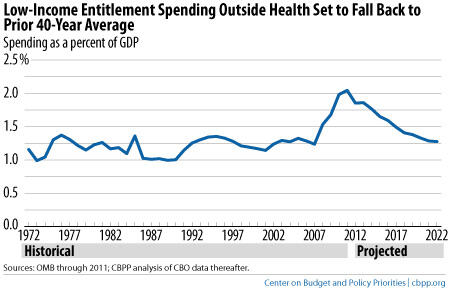BEYOND THE NUMBERS
Federal spending on low-income programs has gone up considerably in recent years, a development discussed at a recent House Budget Committee hearing. A new CBPP analysis examines why and explains that low-income programs outside of health care are not a factor in our serious long-term budget problems. Here’s the opening:
Several conservative analysts and some journalists lately have cited figures showing substantial growth in recent years in the cost of federal programs for low-income Americans. These figures can create the mistaken impression that growth in low-income programs is a major contributor to the nation’s long-term fiscal problems.
In reality, virtually all of the recent growth in spending for means-tested programs is due to two factors: the economic downturn and rising costs throughout the U.S. health care system, which affect costs for private-sector care as much as for Medicaid and other government health care programs. Moreover, Congressional Budget Office (CBO) projections show that federal spending on means-tested programs other than health-care programs will fall substantially as a percent of gross domestic product (GDP) as the economy recovers — and fall below its average level as a percent of GDP over the prior 40 years, from 1972 to 2011. Since these programs are not rising as a percent of GDP, they do not contribute to our long-term fiscal problem.

Specifically, federal spending for mandatory (or entitlement) programs outside health care (including refundable tax credits like the Earned Income Tax Credit) averaged 1.3 percent of GDP over the past 40 years. This spending reached 2.0 percent of GDP in fiscal year 2011, a substantial increase. But CBO projects that it will return to the prior 40-year average of 1.3 percent by 2020 and then remain there (see chart).
Federal spending for low-income discretionary programs is virtually certain to fall as a percent of GDP in the coming decade as well. Under the Budget Control Act’s funding caps, non-defense discretionary spending will fall over the decade to its lowest level as a percent of GDP since 1962 (and probably earlier).
As a result, total spending for low-income programs outside health care — both mandatory and discretionary programs — is expected to fall over the coming decade to a level below its prior 40-year average.
Click here for the full report.
